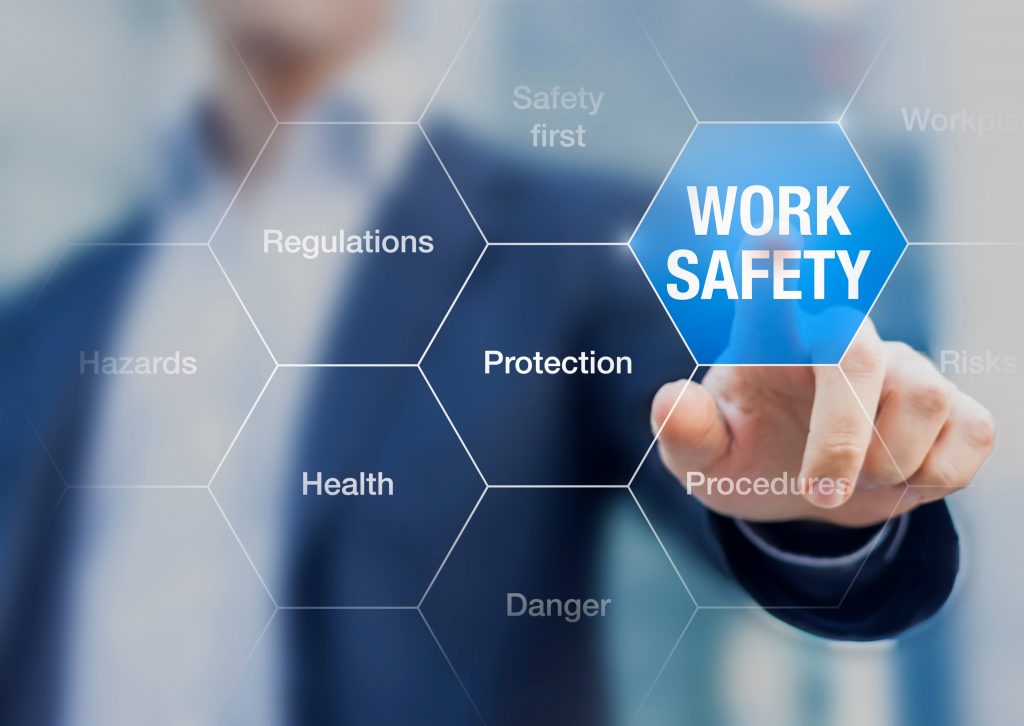
You probably think of office safety as something that only matters if you work on a construction site or in a factory. The truth is, no matter what type of job you have, there are certain vital safety hazards you need to be aware of at all times. In fact, according to the National Institute for Occupational Safety and Health, office workers are injured on the job more often than people in any other profession.
The Occupational Safety and Health Administration reports that there are more than 20,000 office-related injuries each year. The most common office injuries are slips, trips and falls, followed by repetitive strain injuries such as carpal tunnel syndrome. However, there are also a significant number of workplace violence incidents reported each year, with more than 1,000 employees being injured as a result.
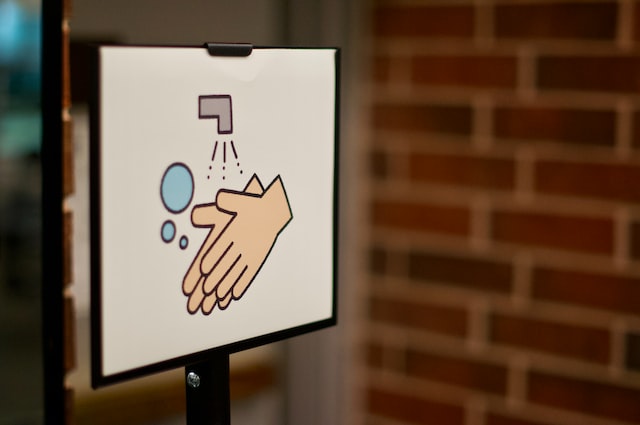
Why Office Safety Should Be a Top Priority for Any Business
Office safety should be a top priority for any office-based business for a variety of reasons. First and foremost, a safe office environment is a productive office environment. When employees feel comfortable and secure, they are more likely to be productive and engaged in their work. Additionally, a safe office environment helps to reduce the risk of accidents and injuries. Even small accidents can lead to lost productivity, tension within the workplace, and increased insurance costs. Finally, prioritising office safety sends a message to employees that their health and wellbeing is important to the company, helping to build morale and cultivate a more positive working environment. When it comes to running a successful business, office safety should be at the top of the list.
Because office safety issues are so prevalent, it’s vital for businesses to ensure that they are going above and beyond to confirm that employees are aware of their roles and responsibilities in the workplace when it comes to the health and safety of their colleagues. Here are a number of useful office safety guidelines for business owners and employees to implement when looking to improve their workplace.
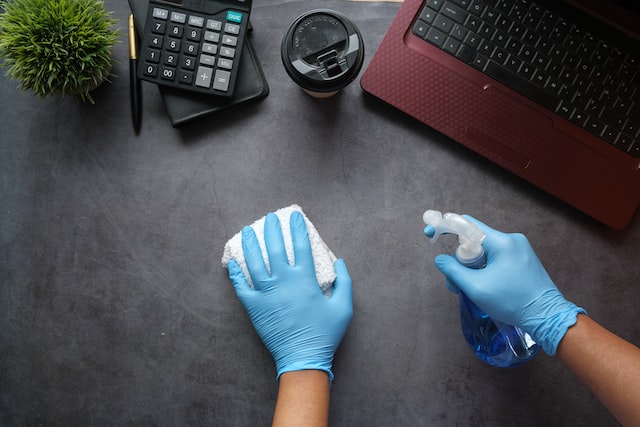
Keep Your Office Environment Clean and Organised
A clean and well-organised office is a safe office. This may seem like a simple tip, but it’s one that’s often overlooked. A cluttered desk or messy floor can quickly lead to an accident like tripping over a loose cable or slipping on a spilt drink. To avoid these hazards, take the time to tidy up your workstation at the end of each day. Put away any loose papers or supplies and make sure that the area around your desk is free of any potential workplace hazards. In addition, you should always strive to keep common areas clean and free of potential health risks, no matter how small they may seem. A little bit of effort can go a long way towards preventing accidents in office environments.
Stay Aware of Your Surroundings and Be Cautious When Working Alone
As the old saying goes, “Safety is no accident.” But in today’s busy world, it’s easy to become complacent about office safety. Whether you work in a large corporate building or a small home office, it’s important to stay aware of your surroundings and take precautions when working alone. Here are some tips to help you stay safe:
- Keep your office door locked when you’re not there. If possible, use a deadbolt or other effective security measures.
- If you work late hours or overnight, let someone know where you are and when you’ll be back.
- Be aware of exits and escape routes in case of an emergency.
- Avoid working in isolated areas of the office, such as an empty cubicle or isolated corner.
By following these simple tips, you can help ensure your safety while working alone in the office.
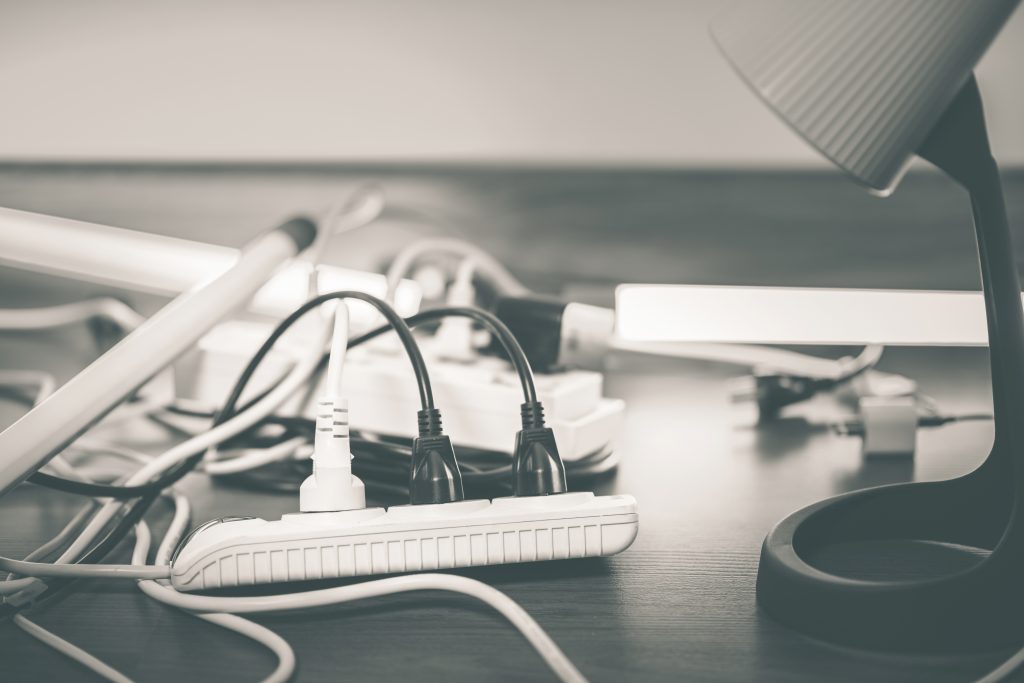
Make Sure All Electrical Cords Are Properly Plugged in and Secured
In any office, there are always going to be electrical cords running around. They’re essential for powering computers, printers, and other pieces of office equipment. However, if these cords are not properly plugged in and secured, they can pose a serious safety hazard. Electrical shock is one of the leading causes of workplace injury, and can easily be prevented by making sure all cords are properly plugged in and secured at all times. It’s also important to regularly inspect cords for damage and to replace them if necessary. By taking these simple steps, you will be ensuring that you’re creating as much of a safe working environment as possible.
Use Caution When Using Heaters or Other Appliances in the Office
With the colder months upon us, many people are turning to heaters and other appliances to stay warm at work. While these devices can be effective in combating chilly office environments, it is important to remember to always use them with caution. Space heaters, in particular, can pose a fire hazard if they are not used properly. Heaters should always be placed on a level surface, away from flammable materials such as paper or fabric. In addition, they should be unplugged when not in use and regularly maintained. The same can be said for a number of other office appliances, including toasters, sandwich presses, and coffee machines.
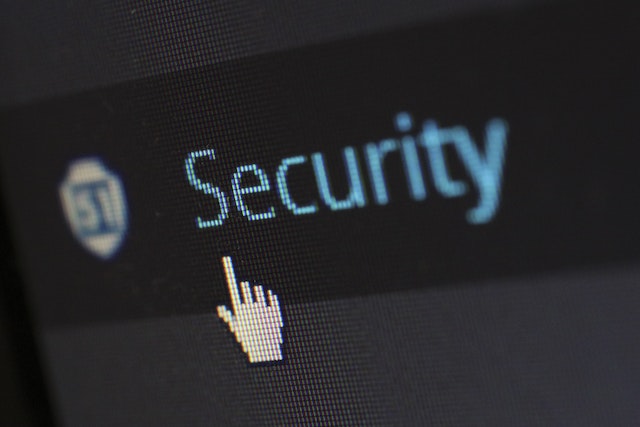
Prioritise Cyber Security
In recent years, there has been an increase in the number of cyber-attacks on businesses across the globe. As our reliance on technology grows, so too does the threat of cyber-crime. Hackers are becoming more sophisticated in their methods, and businesses of all sizes are at risk. For this reason, it is essential that office spaces place a heavy focus on cyber-security as part of their office safety efforts. There are a number of measures that can be taken to protect against cyber-attacks, such as installing firewalls, encrypting data, and educating employees about proper internet usage. By taking these precautions, businesses can help to reduce the risk of a breach and safeguard their data. In today’s digital age, cyber-security is an essential part of office safety, and it should be given the attention it deserves.
Ensure You’re Aware of Emergency Procedures
In any office, there are a number of potential health and safety hazards that could lead to an emergency situation. From fires and electrical faults to chemical spills and evacuation procedures, it is essential that all employees are aware of the office emergency procedures. In the event of an emergency, office workers need to know how to safely evacuate the building and where to congregate. They also need to be aware of the location of first-aid kits and fire extinguishers, as well as how to use them correctly. By familiarising themselves with the office emergency procedures and receiving proper training, employees can help to keep themselves and their colleagues safe in the event of an accident or incident.

If Possible, Stay Home When You’re Sick
When you’re sick, the best thing you can do is stay home. Not only will this help you to get better faster, but it will also protect the health and safety of your colleagues. When you come into work sick, you risk spreading your illness to others. This is especially problematic in workplaces where people are in close proximity to one another, such as offices. In addition, if you’re working while sick, you’re likely to be less productive. This can have a negative impact on both your individual performance and the performance of your team as a whole. In short, when you’re sick, it’s best to stay home and rest. This will help you to get better quickly and protect the health of those around you.
Reward Employees for Noting Safety Hazards
As already noted, workplace safety is a top priority for any office-based business. Not only does a safe workplace protect employees from injury, but it also helps to reduce the risk of liability claims and workers’ compensation costs. One of the best ways to promote workplace safety is to encourage employees to report hazards. By offering rewards for identifying potential dangers, businesses can create a culture of safety that will benefit everyone. Employees who are vigilant about noting hazards are more likely to take steps to avoid them, and their example can inspire others to do the same. In addition, businesses that reward employees for reporting hazards send a clear message that safety is a priority. If you’re finding that employees are consistently reporting hazards, it might be time to conduct more regular risk assessments. This can be particularly useful for businesses that are constantly growing and evolving, as rapid growth often leads to the creation of new, unforeseen health and safety hazards.
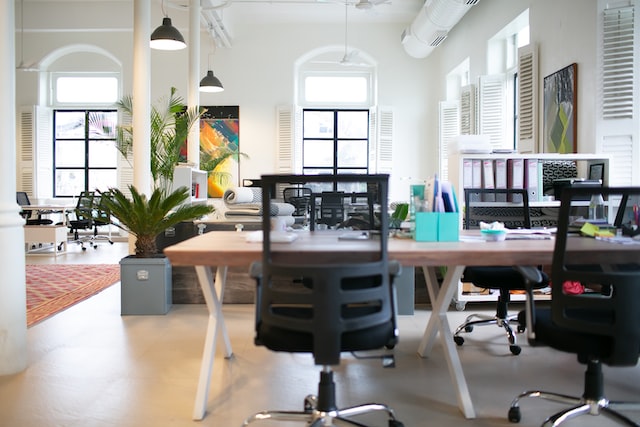
Invest in Ergonomic Office Furniture
One of the most underrated aspects of office safety is ergonomics. Ergonomic furniture is designed to support the human body in a way that minimises strain and injury. For example, chairs with good back support can help to reduce the risk of musculoskeletal disorders. Adjustable equipment, such as desks that can be moved to the right height to help prevent neck pain or computer screens that can be shifted to reduce eye strain, have become increasingly commonplace in recent years. By investing in ergonomic furniture, businesses can reduce the number of niggling workplace injuries, helping to create a safer and more productive workplace.
Assign a Safety Officer
Every office space should have a designated health and safety management officer. This person is responsible for ensuring that the office meets all health and safety regulations, whilst also working to investigate any accidents or incidents that occur. By conducting regular risk assessments and audits of the office space, the health and safety officer can identify potential hazards and take steps to mitigate them. In the event of an accident, the health and safety officer can investigate the cause and make recommendations to prevent it from happening again. By taking these proactive measures, a health and safety officer can greatly reduce the risk of injury in the workplace.
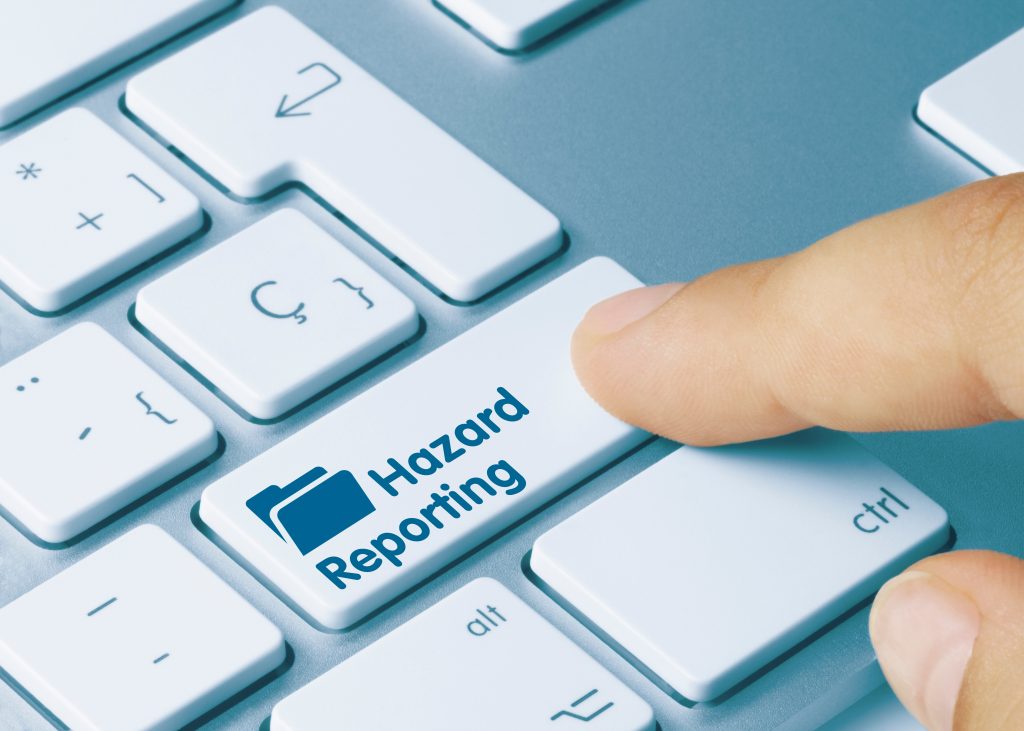
Never Assume That Someone Else Will Report a Potential Hazard
Hazard reporting is an important part of maintaining a safe workplace. However, office employees often assume that someone else will take responsibility for reporting potential hazards. This can lead to dangerous situations if issues are not reported in a timely manner. There are a few reasons why office employees should never assume that someone else will report a potential hazard. First, it is impossible to know who else might be aware of the hazard. Second, even if someone else is aware of the hazard, they may not feel comfortable speaking up. Finally, taking responsibility for reporting hazards shows that you are committed to maintaining a safe workplace. Making sure that health and safety checks are conducted regularly, even if informally, is a great way to contribute to a safer workplace.
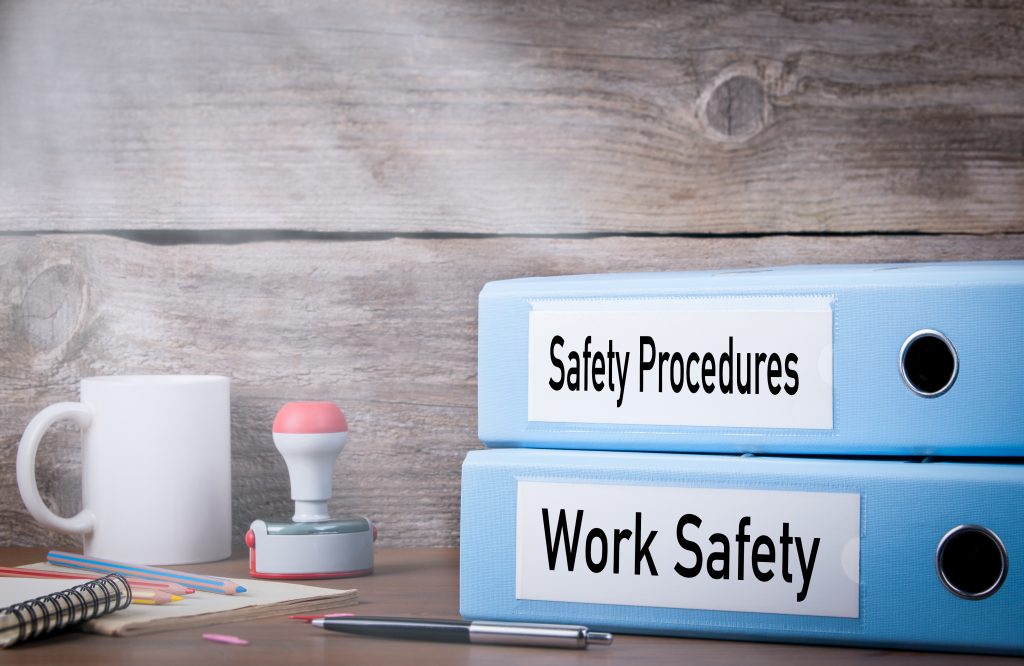
Who Governs Workplace Health and Safety in the UK?
In the United Kingdom, the Health and Safety Executive (HSE) is responsible for enforcing health and safety legislation in the workplace. The HSE is an independent body that reports directly to Parliament. Its aim is to protect people from risks to their health and safety, whether they are employees, customers, or members of the public. To achieve this, the HSE carries out inspections of workplaces, investigates accidents, and provides advice and guidance on health and safety law. The HSE also works with other local authorities and organisations to promote health and safety at work. For example, the HSE supports the British Safety Council in its work to raise standards of health and safety in businesses across the UK. Together, these organisations help to make sure that office spaces are safe for everyone.
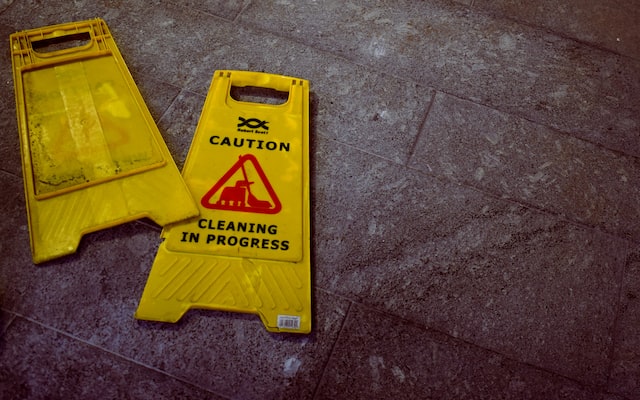
Types of Office Safety Hazards
Tripping hazards
Examples of tripping hazards in an office setting include cords running across walkways, piles of paper or boxes left on the floor, and rug edges that are not secured. To help avoid tripping hazards, always be aware of your surroundings and keep pathways clear. If there is a hazard in your path, take the time to safely remove it, mark it for others, or divert around it.
Electrical hazards
Examples of electrical hazards in an office setting include overloaded outlets, cords that are frayed or damaged, and appliances that are not UL-listed. To help avoid electrical safety hazards, always make sure that you turn the power off at outlets before connecting or disconnecting devices and never overload an outlet!
Chemical hazards
Examples of chemical hazards in traditional office spaces include cleaning supplies (bleach, ammonia, etc.), flammable liquids, and more. Always be aware of what you are handling and where you are storing hazardous materials. Make sure to keep them in secure cabinets or containers away from anyone who shouldn’t be handling them. Label all containers clearly and store them in a safe place. You should also ensure that, when applicable, you’re wearing correct personal protective equipment (PPE).
Biological hazards
Examples of office biological hazards include blood or other bodily fluids, pathogens (viruses, bacteria, etc.), harmful plants, and more. Office biological hazards can be avoided by taking a few simple precautions. First, always wash your hands thoroughly after coming into contact with any bodily fluids. Secondly, avoid touching your face, mouth, or eyes unnecessarily. Third, make sure to keep all harmful plants out of reach. And finally, if you are feeling ill, stay home and avoid contact with other employees.
Poor ventilation
Poor ventilation can be an office hazard for a number of reasons. First, it can lead to respiratory problems and allergies due to the build-up of dust, pollen, and other allergens in the air. Second, it can lead to overheating, which can cause discomfort and safety hazards. Finally, poor ventilation can promote the growth of mould and other biological hazards. To avoid these risks, make sure your office has adequate ventilation and keep it clean and clutter-free.

Noise pollution
Noise pollution in office spaces can come from a variety of sources. One common source is the use of improperly maintained or outdated equipment. This can include everything from copy machines to desktop printers. When these machines are running, they can produce a great deal of noise, which can be disruptive and annoying to coworkers. Another common source of noise pollution in offices is people talking on the phone. This can be especially disruptive if someone is trying to concentrate on a task, and they can hear someone else’s conversation going on in the background. Finally, music or other audio entertainment can also be a source of noise pollution in offices. If it is played too loudly, it can be disruptive to coworkers and make it difficult to concentrate.
Dangerous equipment
Examples of dangerous equipment that can be found in the office include sharp objects, heavy objects, and hot surfaces. To avoid injury, always be aware of your surroundings and use caution when handling dangerous equipment. Keep sharp objects out of reach of visiting children or pets, and never try to move heavy objects by yourself.
Poor lighting conditions
Inadequate lighting compounds a number of the hazards previously mentioned. Poorly lit office spaces can additionally bring down morale, limiting employee wellbeing and contributing to long-term burnout. Natural light plays a major role in good office design, standing as one of the most demanded elements of workplaces across the globe.
Slips and falls
Slips and falls are notable office hazards because they can cause serious injuries. In fact, slips and falls are the leading cause of injury in the workplace. They can occur anywhere in the office, but are most common in areas that are wet or icy. To avoid slips and falls, make sure to keep your office clean and free of clutter, and use caution when walking in locations that have been recently swept or mopped. It’s also important for employees and managers to mark potential hazards as soon as they’re identified, reducing the chances of injury to others.
Fire hazards
Some common fire hazards in the office include overloaded power outlets, faulty electrical equipment, and combustible materials near heat sources. To help prevent fires in the office, you should always be sure to stay on top of general maintenance and cleaning responsibilities. This includes vacuuming, dusting, and mopping on a regular basis. Additionally, it is important to be aware of any equipment or materials in your office that could cause a fire. Sometimes, this might be as simple as using the proper care and sensible storage of flammable liquids.

Conclusion
The office can be a dangerous place if you’re unable to properly conduct a risk assessment to identify potential hazards that exist around you. In this article, we have highlighted some of the most effective ways to ensure that you’re remaining safe and healthy in the workplace. By following these simple tips, you can help keep both yourself and your coworkers safe at all times, providing peace of mind and facilitating maximum productivity.
Did you find this article helpful? Do you have any tips that you would like to add? If so, reach out to us through our social channels on Facebook and Twitter.
Also, if you’re looking for flexible workspace across the UK outside of the business parks listed above, you can view our competitive solutions in Central London, Greater London, the North, and the South. You can also call one of our commercial property experts on 020 3970 9731.
Looking for more articles?
You can visit the links below to find more workplace insights.
15 Best Business Parks in the UK
Hybrid & Flight to Quality – Changing the UK Office Landscape
UK Regional Office Market Report 2022
28 Clever Ways to Organise Your Desk for Maximum Efficiency
Rising Demand in the UK Flexible Office Space Market
How Long is Maternity Leave in the UK? A Full Guide
10 Common Employee Misconceptions in the Workplace and How to Avoid Them
5 Things That UK Employees Want in an Office Environment
Average Office Worker Salary UK: How Does Your Job Stack Up?
Top Ten Industries in the UK
The Step-by-Step Ultimate Office Move Checklist for 2022

